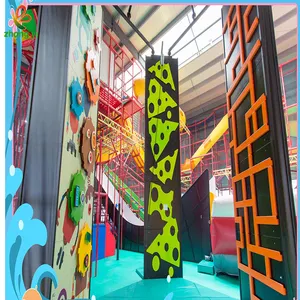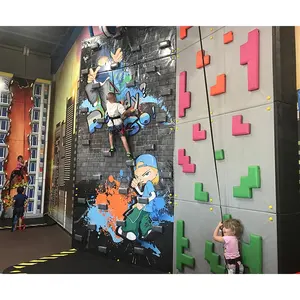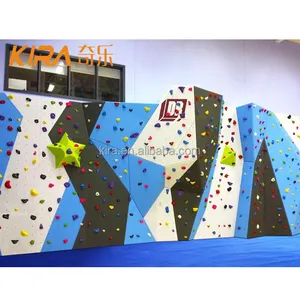An indoor climbing wall is a specially designed vertical structure equipped with holds and features that allow individuals to climb, providing a simulated rock-climbing experience within an indoor environment. These climbing walls are popular in gyms, recreation centers, and climbing facilities, offering a controlled and safe environment for climbers of various skill levels to practice and enjoy the sport of climbing.
Benefits of indoor climbing walls
A climbing wall is an excellent tool for fitness that provides a full-body workout and offers a range of physical and mental benefits. Climbing engages various muscle groups, including the arms, shoulders, back, core, and legs. The act of pulling, pushing, and lifting the body weight against gravity helps develop strength and muscular endurance. Climbing is a dynamic and aerobic activity that gets the heart rate up. As the user ascend and descend the climbing wal, they engage in cardiovascular exercise, improving the heart health and stamina. Climbing requires a wide range of motion as the user reaches, stretches, and moves their body in different directions. This can enhance flexibility, joint mobility, and overall agility. Negotiating the holds and footholds on a climbing wall challenges balance and coordination. This not only improves climbing skills but also enhances overall balance and coordination in daily activities.
Features of an indoor climbing wall
Indoor climbing wall equipment come in various designs and structures. They can range from simple walls with basic features to complex structures that mimic the challenges of outdoor rock formations. The walls are typically constructed using materials such as plywood, fiberglass, or textured panels. Climbing holds are the grips or features attached to the climbing wall, providing handholds and footholds for climbers. These holds come in different shapes, sizes, and textures, offering a variety of challenges for climbers. Indoor climbing walls often have designated routes or "problems" marked by colored tape or holds.
Climbers follow these routes to reach the top of the wall. The difficulty level can vary, catering to climbers with different skill levels. Climbing on indoor walls typically involves the use of belaying systems for safety. Belaying devices, ropes, and harnesses are commonly used to protect climbers in case of a fall. Some indoor climbing walls for home feature auto-belay systems, which automatically retract the climbing rope as the climber ascends and safely lowers them to the ground in case of a fall. This eliminates the need for a belaying partner. Indoor climbing walls provide an excellent opportunity for climbers to improve their strength, endurance, and climbing techniques.
Uses of indoor climbing walls
Climbing can be both a recreational activity and a form of fitness training. Indoor climbing walls make climbing accessible to individuals regardless of weather conditions or geographic location. This allows people to practice climbing year-round and in urban areas where natural rock formations may be scarce. Some indoor climbing facilities include dedicated bouldering areas. Bouldering involves climbing shorter walls without ropes, with crash pads placed on the ground to protect against falls. Indoor climbing facilities often host competitions, events, and climbing leagues. These events can range from friendly competitions among regular climbers to more formal competitions attracting skilled climbers from different regions. Buyers should involve a professional constructor when building an indoor rock climbing wall in their homes for safety purposes. Buy wholesale indoor climbing walls for kids on Alibaba.com today.













































 浙公网安备 33010002000092号
浙公网安备 33010002000092号 浙B2-20120091-4
浙B2-20120091-4